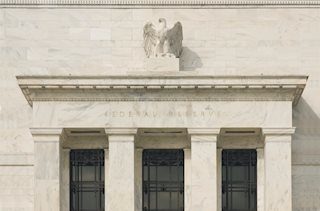What just happened: Why did the Federal Reserve cut interest rates?
|
What just happened?
The US Federal Reserve (Fed), easily the largest and most powerful central bank in the world, just decreased its Federal Funds Interest Rate by 50 basis points (bps) to a reference range of 4.75%-5.0%. This is the first time that the US interest rate has been cut since March 2020 and represents a major policy shift for the Fed.
Why did the Fed cut interest rates?
The US Fed, headed by Fed Chairman Jerome Powell, cut interest rates for the first time in four years in order to alleviate pressure underpinning the US economy and help keep the largest economic region in the world healthy. Interest rates impact a wide range of economic aspects, including how much it costs to borrow money to finance business operations.
With interest rates easing, businesses may be more inclined to step up their pace of borrowing and explore more hiring and production activities. Also, consumers may be more inclined to increase their level of spending on a credit basis, both because it will be slightly easier to obtain bank-funded credit, and also because saving their money will have a slightly less-attractive rate of return versus going ahead and spending it. In this way, central banks can discourage consumers from actively saving more money than they otherwise would have by making the rate of return on savings less attractive, pushing more money into the domestic economy.
As the US central bank, the Federal Reserve has a dual mandate: control the rate of domestic inflation using a variety of policy tools, and also maintain stable employment numbers within the US. Since falling interest rates tend to have an immediately inflationary effect, the Fed needs to be careful about how fast and how much they raise or lower interset rates.
September's rate cut implies that the Fed believes it has successfully tamed US consumer inflation, and expects headline price growth figures to continue easing back toward the Fed's internal goal of 2% YoY inflation.
US employment figures also play a role in Fed decision-making on interest rates, as too high of a reference rate for too long could discourage business activity to the point that a wide sweep of layoffs could force a hiccup into the economy, increasing the likelihood of a recession.
What happens next?
With the Fed’s first rate cut in four years finally out of the way, investors will be immediately pivoting to guess whether the Fed will cut rates again when the central bank gathers on November 7 to deliver another rate call. It is still too early to tell what the Fed’s next move is going to be, and policymakers will want to wait and see what the next few batches of economic data say before making any decisions a little under two months from now.
Fed FAQs
Monetary policy in the US is shaped by the Federal Reserve (Fed). The Fed has two mandates: to achieve price stability and foster full employment. Its primary tool to achieve these goals is by adjusting interest rates. When prices are rising too quickly and inflation is above the Fed’s 2% target, it raises interest rates, increasing borrowing costs throughout the economy. This results in a stronger US Dollar (USD) as it makes the US a more attractive place for international investors to park their money. When inflation falls below 2% or the Unemployment Rate is too high, the Fed may lower interest rates to encourage borrowing, which weighs on the Greenback.
The Federal Reserve (Fed) holds eight policy meetings a year, where the Federal Open Market Committee (FOMC) assesses economic conditions and makes monetary policy decisions. The FOMC is attended by twelve Fed officials – the seven members of the Board of Governors, the president of the Federal Reserve Bank of New York, and four of the remaining eleven regional Reserve Bank presidents, who serve one-year terms on a rotating basis.
In extreme situations, the Federal Reserve may resort to a policy named Quantitative Easing (QE). QE is the process by which the Fed substantially increases the flow of credit in a stuck financial system. It is a non-standard policy measure used during crises or when inflation is extremely low. It was the Fed’s weapon of choice during the Great Financial Crisis in 2008. It involves the Fed printing more Dollars and using them to buy high grade bonds from financial institutions. QE usually weakens the US Dollar.
Quantitative tightening (QT) is the reverse process of QE, whereby the Federal Reserve stops buying bonds from financial institutions and does not reinvest the principal from the bonds it holds maturing, to purchase new bonds. It is usually positive for the value of the US Dollar.
Information on these pages contains forward-looking statements that involve risks and uncertainties. Markets and instruments profiled on this page are for informational purposes only and should not in any way come across as a recommendation to buy or sell in these assets. You should do your own thorough research before making any investment decisions. FXStreet does not in any way guarantee that this information is free from mistakes, errors, or material misstatements. It also does not guarantee that this information is of a timely nature. Investing in Open Markets involves a great deal of risk, including the loss of all or a portion of your investment, as well as emotional distress. All risks, losses and costs associated with investing, including total loss of principal, are your responsibility. The views and opinions expressed in this article are those of the authors and do not necessarily reflect the official policy or position of FXStreet nor its advertisers.